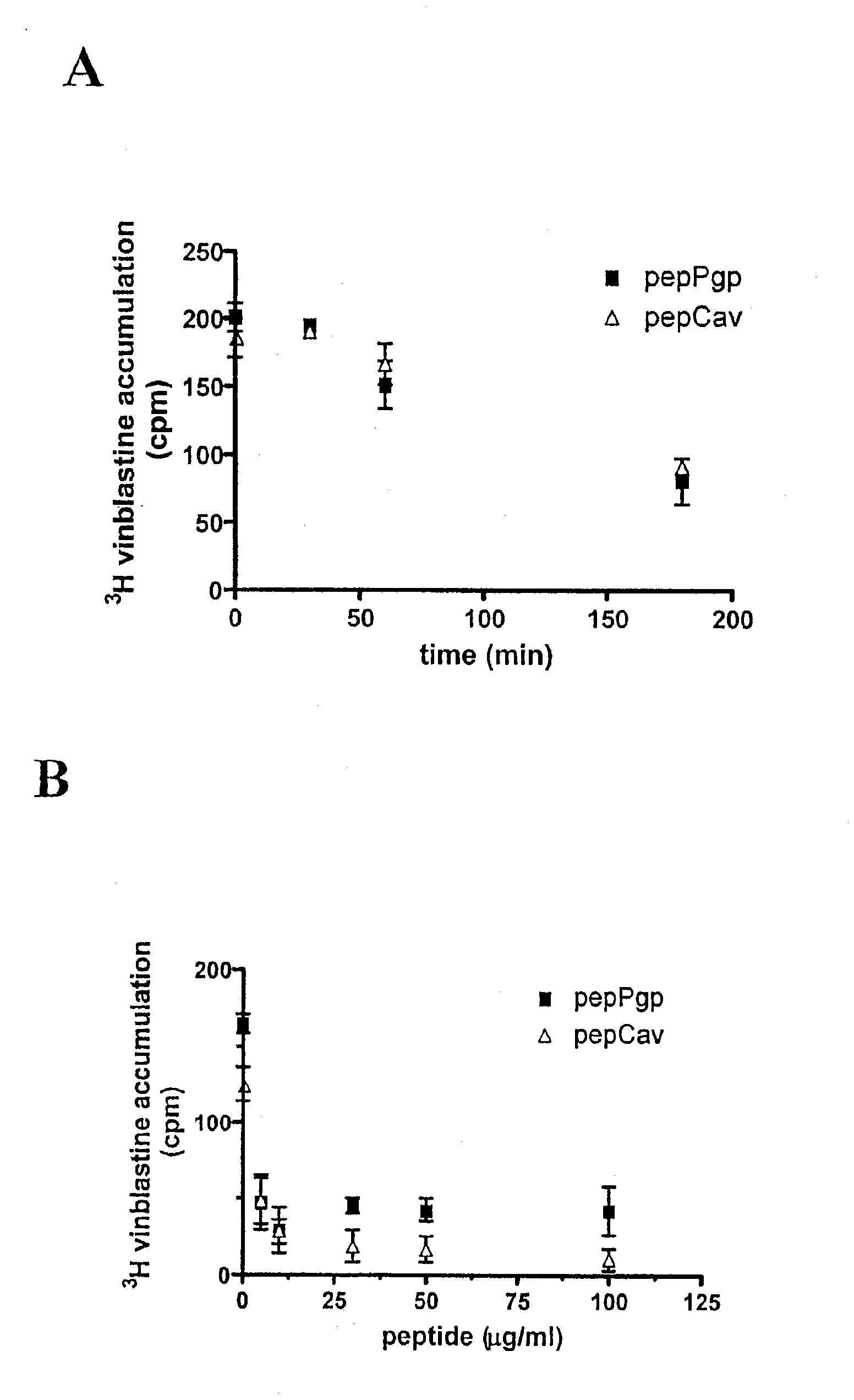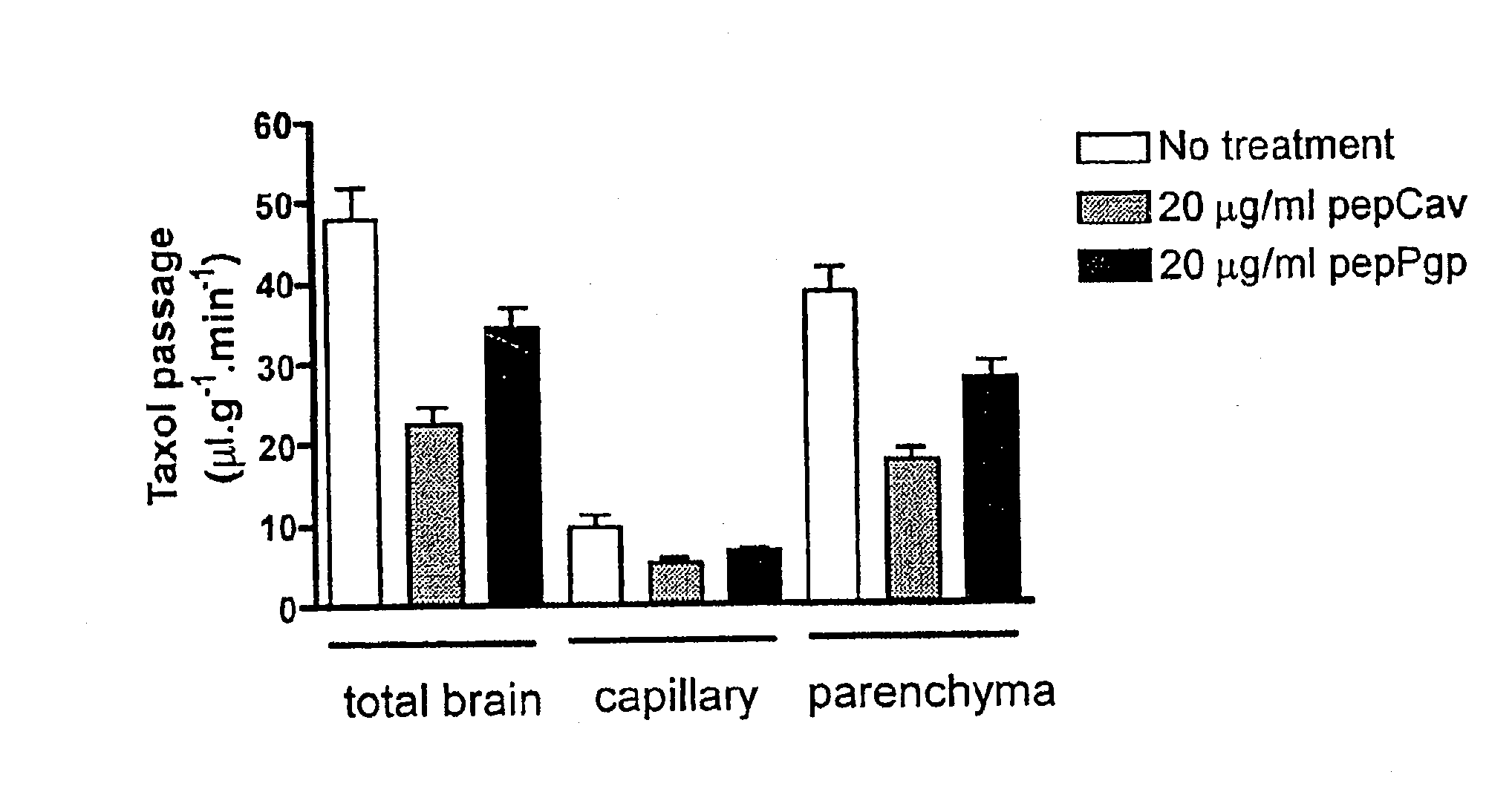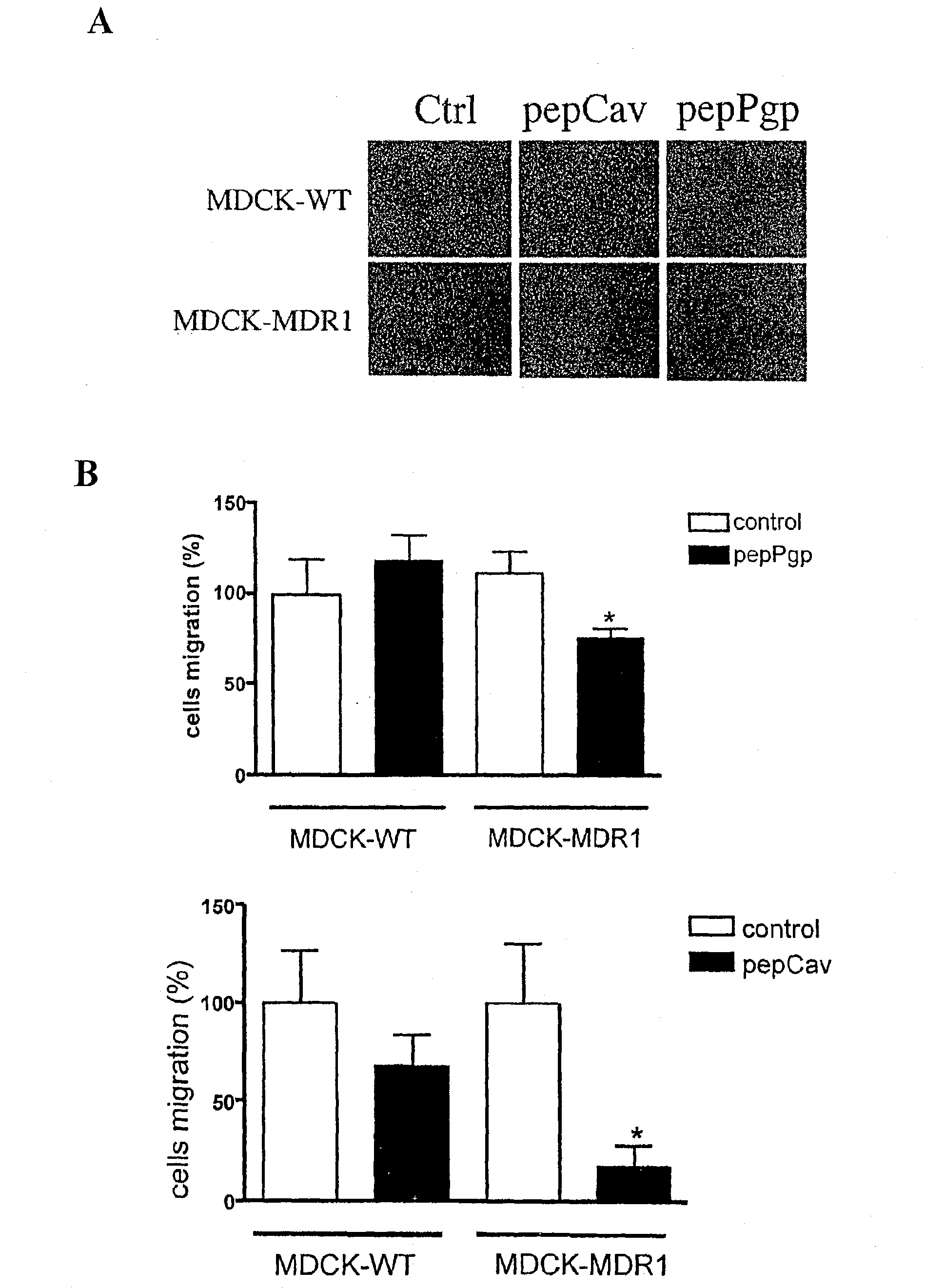Compounds for stimulating p-glycoprotein function and uses thereof
a technology of p-glycoprotein and p-glycoprotein, which is applied in the field of compounds for stimulating p-glycoprotein function, can solve the problems of reducing intracellular concentrations and failure of chemotherapy
- Summary
- Abstract
- Description
- Claims
- Application Information
AI Technical Summary
Benefits of technology
Problems solved by technology
Method used
Image
Examples
example 1
Stimulation of the P-gp Efflux Transport Activity of Vinblastine in Vitro
The effect of compounds PepPgp and PepCav on P-gp efflux transport activity was studied in Madin-Darby canine kidney (MDCK) cells stably transfected with MDR1. Cells were incubated in the presence of pepPgp or pepCav compounds (20 μg / ml). At different times following treatment, the accumulation of vinblastine, a specific substrate of P-gp, was measured. FIG. 1A shows that accumulation of [3H]-vinblastine decreased as a function of time in the presence of both compounds. This result indicates that P-gp transport activity is stimulated in MDCK-MDR1 cells. Furthermore, the addition of increasing concentrations of compounds reduced [3H]-vinblastine accumulation in MDCK-MDR1 cells (FIG. 1B). These results indicate that both exemplary compounds stimulate P-gp transport in a dose-dependent manner. These are the first results describing the action of stimulatory compounds on P-gp transport activity.
example 2
Stimulation of the P-gp Efflux Transport Activity of Beta-Amyloid in Vitro
The effect of compounds on P-gp uptake of beta-amyloid is studied in MDCK cells. Cells are incubated with beta-amyloid (catalog number PRO-447 from ProSpec-Tany TechnoGene LTD), a specific substrate of P-gp. PepPgp or pepCav compounds (20 μg / ml) is then added. At different times of treatment, the accumulation of beta-amyloid is measured. A decrease in beta-amyloid uptake observed in the presence of either one of the compounds is indicative of their stimulatory effect on P-gp efflux transport activity.
example 3
Stimulation of the P-gp Efflux Transport Activity in Vivo
The effect of compounds on P-gp efflux transport activity was investigated in vivo. For this purpose, the brain uptake of [3H]-Taxol, a specific substrate of P-gp, was measured. [3H]-Taxol was perfused into the brain through the right jugular vein for 5 minutes in the presence or absence of pepCav or pepPgp at a concentration of 20 μg / ml. Radioactivity of [3H]-Taxol was analyzed in the total brain, the capillary and the parenchyma. As shown in FIG. 2, Taxol passage was reduced in the total brain by 50% and 30%, respectively, for pepCav and pepPgp as compared to control mice. The reduction was similar in the capillaries and in the parenchyma, indicating that the increased activity of P-gp reduced the accumulation of [3H]-Taxol in endothelial cells as well as the brain uptake. These results indicate that the compounds are able to stimulate P-gp transport activity in vivo at the blood brain barrier.
PUM
| Property | Measurement | Unit |
|---|---|---|
| Fraction | aaaaa | aaaaa |
| Fraction | aaaaa | aaaaa |
| Length | aaaaa | aaaaa |
Abstract
Description
Claims
Application Information
 Login to View More
Login to View More - R&D
- Intellectual Property
- Life Sciences
- Materials
- Tech Scout
- Unparalleled Data Quality
- Higher Quality Content
- 60% Fewer Hallucinations
Browse by: Latest US Patents, China's latest patents, Technical Efficacy Thesaurus, Application Domain, Technology Topic, Popular Technical Reports.
© 2025 PatSnap. All rights reserved.Legal|Privacy policy|Modern Slavery Act Transparency Statement|Sitemap|About US| Contact US: help@patsnap.com



